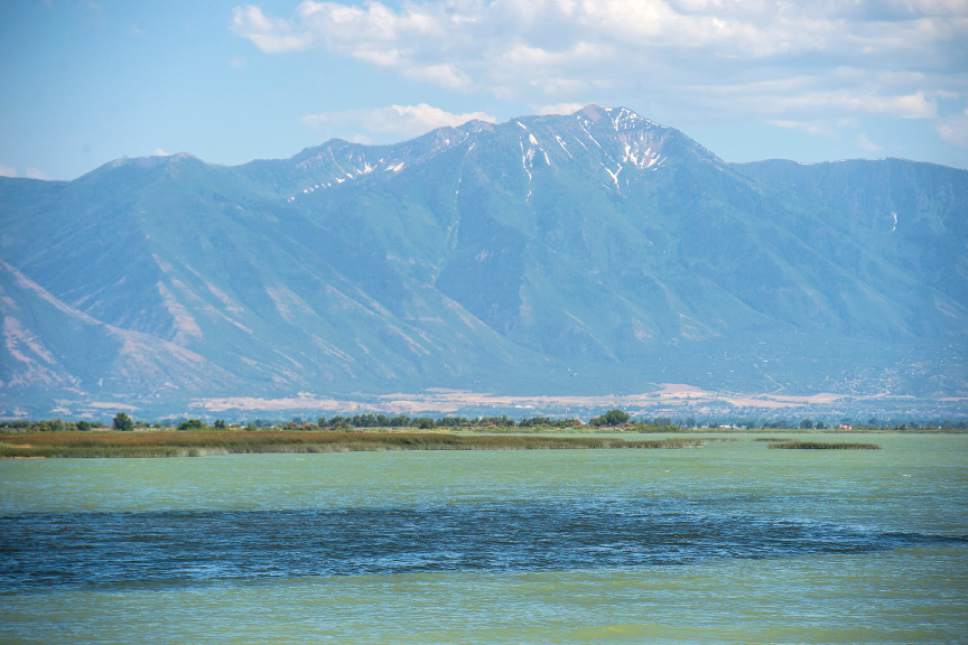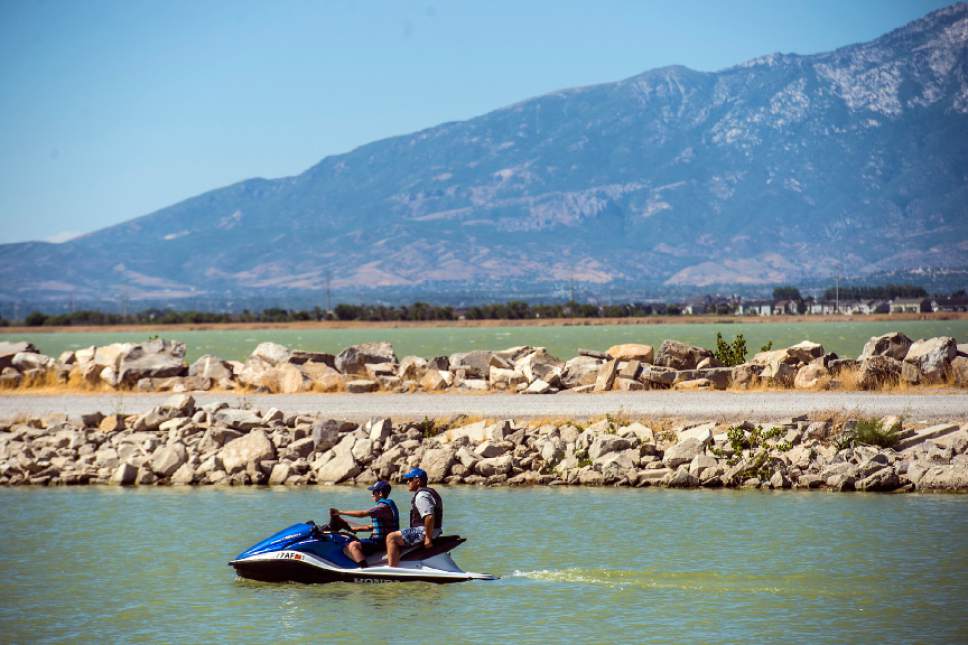This is an archived article that was published on sltrib.com in 2017, and information in the article may be outdated. It is provided only for personal research purposes and may not be reprinted.
Health warnings related to a toxic algal bloom on Utah Lake remain in effect this weekend — though residents are getting mixed messages from government officials as to what that means.
Aislynn Tolman-Hill, a public information officer with the Utah County Health Department, said the bloom does not appear to have changed significantly from last week. The department is waiting for more data, she said, before modifying its stances on health warnings.
The agency is "having trouble" getting water samples from the lake analyzed, Tolman-Hill said, due to a lab backlog.
But Ben Holcomb, harmful algal bloom program coordinator for the Utah Department of Environmental Quality (DEQ), said he was not aware of any backlog in processing samples.
Holcomb said the DEQ has collected and analyzed samples from the lake's shoreline and those samples contained fewer cyanobacteria — the microorganisms responsible for the so-called toxic or blue-green algal bloom — than earlier samples, he said. Those earlier samples, though, were collected farther from the shoreline.
Holcomb said a team from Brigham Young University began collecting off-shore samples for the DEQ on Thursday. The analysis of those samples should be available next week.
Because the health department has not received new data over the past week, Tolman-Hill said they have relied on visual inspections of the lake to determine whether to modify their advisories.
Warning signs remain in place in the Provo Bay area, and were temporarily posted at Sandy Beach last weekend when scum began to accumulate near the shore, Tolman-Hill said. Those signs were later removed when conditions appeared to improve, she said, but both Sandy Beach and Lincoln Beach showed "what we would call the beginnings of a bloom there."
Although there are currently no signs posted outside Provo Bay, Tolman-Hill said residents should use caution with regard to the entire lake, especially areas that exhibit visible scum, foam, or what looks like antifreeze in the water.
"We want people to be aware whenever they are on the lake to be on the lookout for areas that don't seem normal," she said.
People and pets should stay out of the water in these areas to avoid ingesting any toxins that may be present. But Tolman-Hill said the health department has not yet closed any of the lake to boating or other activities.
Meanwhile, the official DEQ Twitter account has encouraged residents to "enjoy @UtahLake" while keeping in mind the Utah County Health Department Advisory at Provo Bay and avoiding "green scum and mats on the lake."
DEQ also tweeted that those who have been on the lake should contact Utah Poison Control if they experience nausea, headaches or rashes. The agency later tweeted, pointing residents to a DEQ website for additional information. As of late Friday evening, the website was last updated on July 3.
Twitter: @EmaPen









